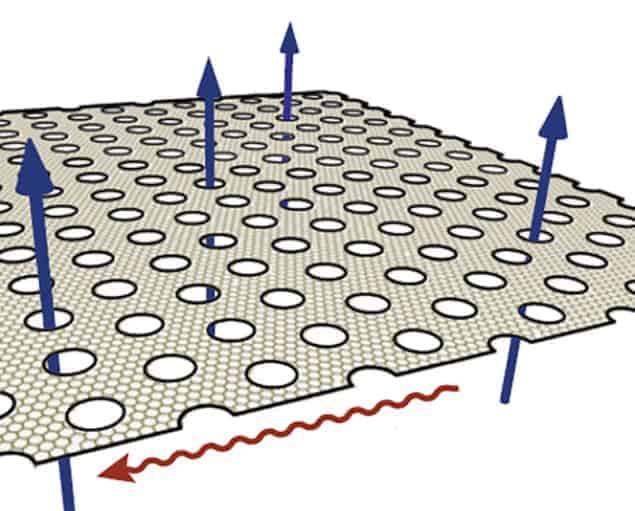
Patterned graphene should be an ideal material for creating infrared topological plasmons, according to calculations by physicists in the US and China. Dafei Jin, Thomas Christensen and colleagues at the University of California, Berkeley, Massachusetts Institute of Technology and the Institute of Physics of the Chinese Academy of Sciences came to this conclusion after calculating the electronic properties of graphene – a sheet of carbon just one atom thick – patterned with a triangular lattice of circular holes (see figure).
Plasmons are particle-like collective oscillations of conduction electrons that can be created when light is shone on a material. The team’s calculations suggest that when a magnetic field is applied perpendicular to the patterned graphene sheet, plasmons created by infrared light are able to propagate in one direction along the edge of the sheet. However, the plasmons do not propagate into the interior of the sheet – and this behaviour is a hallmark of a topological material.
Writing in Physical Review Letters, the team suggests that infrared topological plasmons could be useful for creating practical devices that combine optics with ultrafast electronics.



